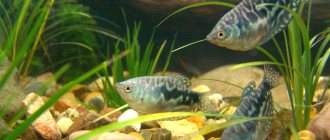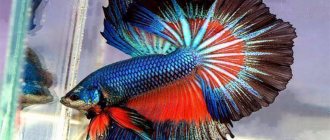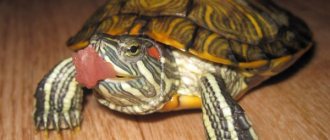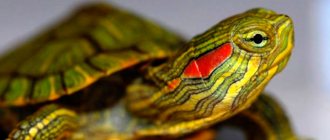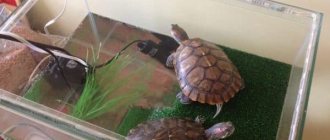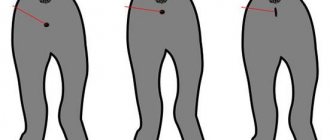This question worries many who have decided to have an animal at home, but simply answering it is not so easy.
To determine the sex of a red-eared slider, you need to wait until it reaches a certain age, when a number of signs begin to indicate its gender. Having reached the age of 6-8 years, the red-eared slider is ready to breed. It is during this period that it is easiest to determine their sex, but already at 1.5-2 years, after analyzing all the combined characteristics, you can try to determine the sex of the red-eared slider. In order to determine gender, you should pay attention to the following features that can distinguish a boy turtle from a girl turtle.
Claw length
Male red-eared sliders have longer claws on their front feet than females. The male needs this in order to hold onto the female’s shell more firmly at the time of fertilization. Females have slightly shorter claws, but they are more blunt.
This method is quite simple, but can be misleading in the process of keeping them in captivity. Spending a lot of time on the island, the turtle can wear its claws. Here everything will depend on what material the sushi element is made of.
Getting to know your pet
Red-eared turtles are easy to care for and therefore are recommended for those who first decided to have reptiles. Red-eared turtles are a freshwater species. They live about 30-40 years. The length and shell can reach 18-30 centimeters.
The shell of turtles is olive or yellowish-brown in color. In young individuals it may be deep green.
The turtle's head and neck are covered with white and green stripes and spots. But they owe their name to two spots extending from the eye area. They have an orange-red tint.
The red-eared turtle comes from America. Its natural habitat is all of Central America and the northwestern part of South America. The species was also introduced into Israel, South Africa, Guadeloupe and other European countries, where it successfully took root.
Find out how long ferrets live at home if you feed them properly, maintain them, and treat them promptly.
And this publication tells how long a chinchilla can live at home.
How long a pet hamster will live with proper care is described here.
The amphibian lives in small swampy bodies of water: lakes, ponds. Turtles are inactive, but curious. Their favorite pastime is lying in the warm sun.
The red-eared turtle has well-developed vision and sense of smell, but the hearing and vocal cords of this amphibian are poorly developed. The turtle can only hiss or snort when excited and irritated. Possessing strong jaws, the red-eared turtle can seriously injure a person or other pet if it is in danger.
Features of the shell
By carefully studying the structure of the shell of a red-eared turtle, you can just as easily determine the gender of your pet. In order to facilitate the mating process, males have a shell with a concave abdominal part. Females do not have this feature.
If you look closely at the shape of the shell, it is different: males have a more elongated and elongated shape. In the area of the tail, the shape of the shell of males is similar to the Latin letter V, while in females it is more rounded. In the tail area, the female has a large hole, which facilitates normal egg laying.
Determination of gender
Having bought a funny turtle, many owners think about breeding offspring, and, as a rule, about acquiring a sexual partner for their pet. However, before getting a second animal, you must accurately determine the sex of the red-eared slider, and this is not an easy question.
The easiest way to find out the gender of a pet is at 6–8 years of age, when the turtle shows characteristic signs. However, if you carefully analyze the behavior and appearance, you can determine the sex of the turtle at one or two years.
Red-eared slider - how to determine gender:
- by claw size;
- by shell;
- along the tail and cloaca;
- having studied the characteristics of behavior.
The first way to determine sex is to compare the length and shape of the claws of male and female individuals. Male turtles have claws that are irregularly shaped and long, while female turtles have short claws with a rounded edge. When examining the fingers of your pets, you should take into account that turtles living in captivity have their claws ground down on the ground, so this method is not infallible.
The second method of determination is to examine the shell. To facilitate mating, nature created a more extended and elongated shell shape in boys; the female sex has a more rounded and wider shell.
The most common way to distinguish the sex of a red-eared turtle is to study the tail and cloaca. Having carefully examined the back of the pet, a conclusion is made based on the following statements:
- the male's tail is longer, thick at the base and tapering towards the end;
- girls have a round, short ponytail without narrowing or widening;
- The female's cloaca looks like an asterisk and is located closer to the shell;
- The cloaca of the male individual looks like a line, and is removed from the shell.
Sex determination is also carried out by comparing the sizes of two adult turtles of different sexes. It is important that the turtles are the same age, so in this case you need to know how to determine the age of a red-eared slider. Females are larger and more massive than males, since they bear offspring and lay eggs in the future. Clearly expressed signs of gender differences appear during the mating season - male turtles become more active, behave agilely and try in every possible way to attract the attention of their partner, and female turtles calmly evaluate the behavior of the male.
Other signs of red-eared turtles
If there are turtles of the same age, you can try to determine their sex by their overall dimensions. Females are slightly larger than males because they will have to carry and then lay eggs.
Some experts point out that the male's muzzle has a more elongated shape than the female's muzzle. The female's muzzle has a more round outline. The paws of males have more pronounced spurs, which indicates that they are stronger than the paws of females.
Diseases of aquatic reptiles and preventive measures
If you provide the marsh turtle with decent living conditions, you can avoid any problems with its health. She has strong natural immunity and high vitality. Most turtle illnesses are associated with improper housing conditions or poor care. More often than others, the following diseases and pathologies are detected in freshwater reptiles:
- A cold is the result of cooling or keeping your pet in a draft. It manifests itself in the form of irregular, difficult breathing, the appearance of mucous discharge from the nasal passages and oral cavity. The turtle begins to wheeze, refuses to eat, and moves little.
- Rectal prolapse or prolapse of the cloaca (cloacitis) - pathology can occur due to various reasons. Most often it develops against the background of helminthic infestation or prolonged diarrhea. The turtle's cloaca is visible, soil and debris stick to it, and the front limbs may swell.
- Diarrhea - in most cases, is the result of eating low-quality or stale food.
- Nematodosis and cestodosis - tapeworms and roundworms enter the reptile's body from food that has not undergone heat treatment.
- Intestinal obstruction - the main cause is associated with the ingestion of foreign objects - small pebbles, sand, debris. Rarely manifests itself in the form of vomiting, shortness of breath, and neurological disorders.
- Paralysis of various origins.
- Violation or delay in egg laying - a turtle can carry its offspring beyond term due to a narrowing of the birth canal, large egg size, lack of a ready-made nest, and other reasons.
- Infection with ectoparasites - creatures that parasitize the outer surface of the reptile.
In addition, when home furnishings are violated, residents are often injured and their skin is damaged. Often, inexperienced owners of marsh reptiles make a number of mistakes when keeping their pets, which leads to deformation of the armored scutes. More often, this occurs as a result of a deficiency of vitamin components and calcium during the period of active growth and puberty of the individual.
Features of behavior
It is especially possible to determine the sex of red-eared turtles during the mating season. Behavioral characteristics indicate that each pet belongs to one gender or the other. During the mating season, the activity of males increases sharply. They organize all sorts of demonstrations to demonstrate their capabilities. At the same time, they actively swing their front legs, with much larger claws than the females have. During this period, they constantly chase females and make attractive head movements.
If someone is seriously involved in breeding red-eared turtles, then this article will be very useful, since at an early stage, before they are ready to reproduce, turtle pairs can be formed. In addition, such knowledge will help to correctly and accurately name pets, which is very important for many owners.
In pursuit of something unusual, it has recently become fashionable to keep exotic animals such as snakes, boa constrictors, chameleons, etc. at home. This list also includes many species of turtles, including the red-eared slider. All of them are representatives of the tropics and require special attention and special conditions of detention. It is very important that all those who want to have a red-eared turtle at home understand that it also needs certain conditions, without which it simply cannot live. In addition, this is a very expensive business, since the turtle’s diet must be varied, otherwise it will not be able to develop normally due to lack of nutrients.
Relationship between age and red spots
The most likely place to purchase a turtle for a home pond is a pet store, where the seller, among other data, must tell you the age of the reptile being purchased.
However, you, as the future owner, also need to navigate this issue, since reptiles of different ages feed differently and require different care, and having at least basic information about the future pet will be very useful.
So, the red-eared turtle is called due to the presence of red spots behind its eyes, which, in general, are in no way connected with the hearing organs.
Over the course of a turtle's life, as it grows, these spots change their color saturation from scarlet to burgundy.
The green carapace of the red-eared reptile with stains and stripes at a younger age becomes darker and duller as it ages.
An important indication of the age of a red-eared turtle can be the size of its carapace. But here it should be taken into account that in comfortable conditions a pet can grow at an accelerated pace, and there are many subspecies of red-eared reptiles, and not all of them have the same shell length/age ratio.
So how can you determine the age of your red-eared pet as reliably as possible?
The most accessible to a non-specialist for determining the age of red-eared reptiles are several methods - by the length of the carapace and the pattern on it, by its color and shape.
What to feed your reptile at home
To begin with, it is worth determining which of the three categories the turtle belongs to by type of nutrition, distinguishing it in order to understand what ratio of plant and animal food the animal should receive and what to feed it. List:
To properly feed turtles, you need to study what they eat in nature.
Predatory
80% plant and 20% animal.
- Main food: lean fish, beef or chicken liver (once a week), seafood and small mammals.
- Additional: dry food, insects, shellfish, amphibians and invertebrates.
- Prohibited: meat, fatty fish, milk, cheese, bread, fruit, dog or cat food.
Omnivores
50% plant and 50% animal. Everyone loves to eat.
Main food: for aquatic animals – fish, seafood and algae; for land animals - mice, fruits, vegetables and land plants.
Reproduction
The breeding season for red-eared turtles that live in the Southern Hemisphere is from September to December, and those that live in the Northern Hemisphere is from April to June. As a rule, mating occurs under water. They build their cozy nests on the sand near the water, in places shaded by plants, so as not to overheat. Male pet turtles reach sexual maturity at 4 years, females at 6 years. The mating period at home is from February to May. After mating, the female comes to land to lay eggs.
Therefore, it is very important for these animals to create appropriate conditions in captivity. Small turtles are born after 105-150 days; the ambient temperature should not fall below 21 degrees. The length of the cubs is 3 cm
The length of the cubs is 3 cm.
Offspring are born during the rainy season, which lasts from September to December in areas north of the equator, and in June in areas south of the equator.
Interesting: What causes a snail's shell to crack?
Why do turtles live so long?
This animal can survive for a long time not only without food, but also without water. There are cases where turtles went without eating food for a long time, measured in several years. This amazing fact of their behavior was recorded quite a long time ago. Turtles move very slowly throughout their long lives and have wrinkled skin. For these reasons, age-related changes and aging are very difficult to notice in them. The same applies to internal organs.
Scientists have long been looking for an answer to what determines the lifespan of turtles by studying their genetic characteristics. Natural death of these reptiles occurs very rarely. The cause of death is often illness or death from predators and people.
If these cases were excluded, the life of turtles would last much longer. They have another amazing feature - they control the heartbeat: stop it for a while and then start it again. When the heart stops, the turtle freezes and does not move at all.
Differences in the character of males and females
Behavior during the mating season clearly demonstrates the difference in temperament between individuals. If girls are characterized by a calm state and moving within the aquarium only when necessary, then males show aggression. In order to attract the attention of the opposite sex, they begin:
- chase turtles;
- bite females on the neck;
- make a squeak.
The last sign does not provide a guarantee - some girls are capable of imitating this sound, which introduces uncertainty. In childhood, they can imitate flirting with their claws and bite other individuals.
During the mating season, boys begin to actively court and demonstrate their advantages, which looks like a dance: they begin to move their front paws and tail, actively shake their heads in different directions, and try to ride the person they like.
To prove his own strength, the male shows aggression towards his aquarium neighbors, provoking fights. They begin with a flip onto the shell and strikes with the paws. Sometimes there are attempts to bite competitors on parts of the body that are not covered with a hard shell (hind legs, tail, neck), which leads to severe, life-threatening injuries.
Second way
The reptile's shell represents its unique passport, provided that it was provided with good care, properly fed and provided with enough living space.
In this case, the concentric rings on the carapace will indicate a certain number of years she has lived. These rings first appear on the turtle’s shell when it reaches one year of age, and for the first two years of its life, the grooves of the rings are marked quite dynamically, adding two or three every six months.
To do this most accurately, you need to count the number of rings in different parts of the carapace and display the average result.
Medical research
If after all the manipulations it was still not possible to understand the gender, then you can turn to medical research. This technique can be used only after the ovaries or testes have fully matured.
IMPORTANT! If kept incorrectly, the reptile's hormonal levels are disrupted, which reduces the reliability of the results obtained.
When determining gender use:
To ensure the reliability of the information received, it is important to act step by step. Determining the sex of a red-eared slider should be done using all the proposed methods. If the results obtained are inconsistent and do not allow you to confidently classify your pet as a specific gender, trust your veterinarian.


